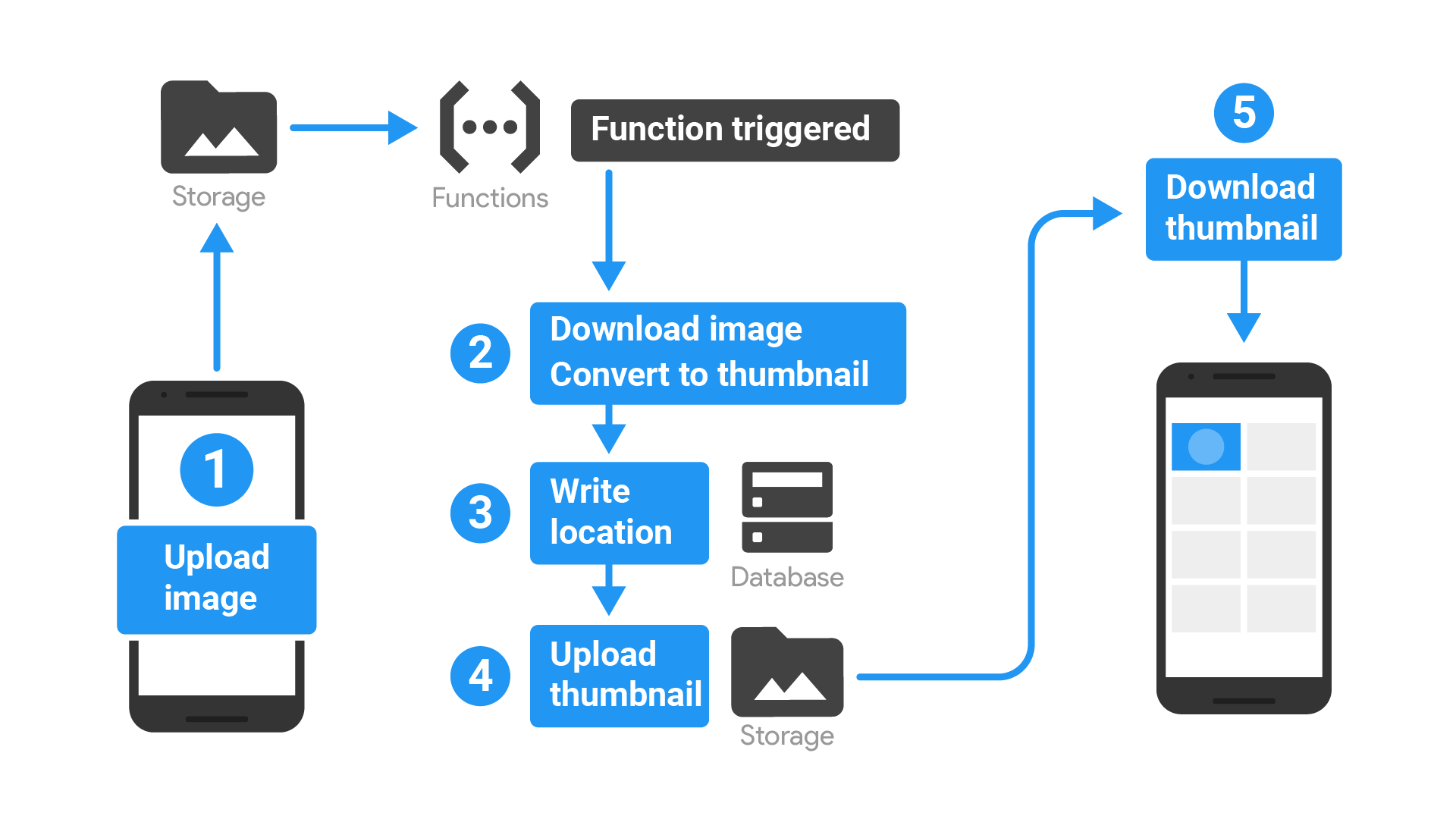Cloud Functions gives developers access to Firebase and Google Cloud events, along with scalable computing power to run code in response to those events. While it's expected that Firebase apps will use Cloud Functions in unique ways to meet their unique requirements, typical use cases might fall into these areas:
- Notify users when something interesting happens.
- Perform database sanitization and maintenance.
- Execute intensive tasks in the cloud instead of in your app.
- Integrate with third-party services and APIs.
Review the use cases and examples for each category that interests you, and then proceed to our Get Started tutorial or to specific how-to guides for authentication events, analytics events, and more.
Notify users when something interesting happens
Developers can use Cloud Functions to keep users engaged and up to date with relevant information about an app. Consider, for example, an app that allows users to follow one another's activities in the app. Each time a user adds themselves as a follower of another user, a write occurs in the Realtime Database. Then this write event could trigger a function to create Firebase Cloud Messaging (FCM) notifications to let the appropriate users know that they have gained new followers.

- The function triggers on writes to the Realtime Database path where followers are stored.
- The function composes a message to send via FCM.
- FCM sends the notification message to the user's device.
To review working code, see the sample code in GitHub:
- Node.js: fcm-notifications
- Python: fcm-notifications
Other interesting notification use cases
- Send confirmation emails to users subscribing to a newsletter.
- Send a welcome email when a user completes signup.
- Send an SMS confirmation when a user creates a new account.
Perform database sanitization and maintenance
With Cloud Functions database event handling, you can modify Realtime Database or Cloud Firestore in response to user behavior, keeping the system in your desired state. For example, you could monitor write events and change the format (for example, change to all uppercase) of certain strings in users' messages. Here's how that could work:

- The function's database event handler listens for write events on a specific path, and retrieves event data containing the text of a messages.
- The function processes the text to change strings to uppercase.
- The function writes the updated text back to the database.
To review working code, see the sample code in GitHub:
- Node.js: uppercase-rtdb
- Python: uppercase-rtdb
Other database sanitization and maintenance use cases
- Purge a deleted user's content from Realtime Database.
- Limit the number of child nodes in a Firebase database.
- Track the number of elements in a Realtime Database list.
- Copy data from Realtime Database to Google Cloud BigQuery.
- Convert text to emoji.
- Manage computed metadata for database records.
Execute intensive tasks in the cloud instead of in your app
You can take advantage of Cloud Functions to offload to the Google cloud resource-intensive work (heavy CPU or networking) instead of running it on a user's device, improving the responsiveness of your app. For instance, you could write a function to listen for image uploads to Cloud Storage, download the image to the instance running the function, modify it, and upload it back to Cloud Storage. Your modifications could include resizing, cropping, or converting images with tools like sharp or Pillow.

- A function triggers when an image file is uploaded to Cloud Storage.
- The function downloads the image and creates a thumbnail version of it.
- The function writes that thumbnail location to the database, so a client app can find and use it.
- The function uploads the thumbnail back to Cloud Storage in a new location.
- The app downloads the thumbnail link.
For a walkthrough of an image processing example, see the guide to handling Cloud Storage events.
Other examples of batch jobs in the Firebase cloud
- Periodically delete unused Firebase accounts Node.js | Python.
- Automatically back up uploaded images Node.js | Python.
- Send bulk email to users.
- Aggregate and summarize data periodically.
- Process a queue of pending work.
Integrate with third-party services and APIs
Cloud Functions can help your app work better with other services by calling and exposing web APIs. For instance, an app used for collaboration on development could post GitHub commits to a workgroup chat room.

- A user pushes commits to a GitHub repo.
- An HTTPS function triggers via the GitHub webhook API.
- The function sends a notification of the commit to a team Slack channel.
Other ways to integrate with third-party services and APIs
- Use Google Cloud Vision API to analyze and tag uploaded images.
- Translate messages using Google Translate.
- Use custom auth to sign in users.
- Send a request to a webhook on Realtime Database writes.
- Enable full-text search on Realtime Database elements.
- Process payments from users.
- Create auto-responses to phone calls and SMS messages.
- Create a chatbot using Google Assistant.
